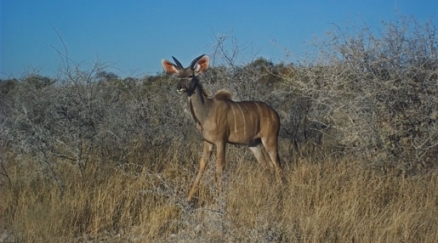Landscape permeability (About the EoE)
Contents
Landscape permeability
Landscape permeability describes the quality of a landscape that allows organisms to move freely across it. It describes the degree to which the landscape impedes or facilitates movement among suitable habitat and resource patches. Landscape permeability depends on both the physical structure of the landscape and the ability of an organism to move among patches on that landscape. This concept can lead to the identification of potential bottlenecks or barriers to animal movement. Landscape features that are readily crossed by an organism are called permeable, those that are crossed reluctantly are called semipermeable, and those that are not crossed are called impermeable.
Relationship to metapopulations
The concept of landscape permeability is intrinsically linked to the notion of metapopulations, i.e. subpopulations of a species which inhabit distinct areas or patches. These metapopulations have an implicit method of partial connectivity via the dispersal of organisms utilizing landscape permeability. Thus the concept of landscape permeability is necessarily linked to the concept of habitat fragmentation, since landscape permeability is the characteristic that allows not only the metapopulations, but also the fragmented patches themselves, to function as a larger whole by dent of the mobility afforded by landscape permeability. An important relationship among these concepts is stated in the Levins metapopulation model: the probability of local extirpation of a species having a set of metapopulations is dependent upon the degree of landscape permeability with respect to that species as well as the density of habitat patch metapopulations.
Species perceive landscape permeability in different ways
Since species vary in their mobility and propensity for dispersal, the degree of landscape permeability in a given mosaic of habitat patches will depend on the life history characteristics of each species. What appears to be an impermeable landscape for one species may be permeable to another.
Species with greater mobility theoretically should move easily among isolated habitat patches. However, this is not always the case. For example, wolves (Canis lupus) will move freely over long distances and through marginal habitats while grizzly bears (Ursus arctos) have not been documented to show the same freedom of movement. Grizzly bears are restricted to high quality habitat as they move across the landscape and are impeded by roads and human development. These impediments reduce survival and grizzly bear movement between patches.
In some cases the overall landscape matrix may provide high permeability but non-permeable barriers such as roads or rivers can obstruct movement. In Amazonia, New Guinea, and the South Pacific, the movement of many rainforest bird species has been shown to be inhibited by narrow, low-traffic roads that bisect otherwise suitable habitat patches.
Species that are habitat generalists or trophic generalists often perceive landscapes as more permeable. Some species, especially plants, have developed strategies to cross otherwise inhospitable landscapes by attaching themselves to larger species, i.e. a cocklebur (Xanthium spp.) attached to the fur of a wolf.
Implications for conservation
An analysis of landscape permeability can identify landscape components that may threaten the long term viability of a species within the landscape. A landscape with low permeability can isolate a population, inhibiting gene flow, the exchange of genetic material between populations. This can lead to inbreeding and the extirpation of a population. The understanding of where barriers to permeability exist can be used in conservation decisions that restore or preserve gene flow within or between populations of individuals.
Landscape permeability analysis can identify areas within a landscape that are critically important to the overall permeability of a landscape. These critical areas can become targets for conservation to protect them from development or degradation, which would lower the overall quality of the habitat throughout the landscape.
Related Terms
- Biological corridor
- Connectivity
- Habitat destruction
- Habitat fragmentation
- Landscape Ecology
- Traversability Fracture zone
- Island Biogeography
Further reading
- Levins, R. 1969. Some demographic and genetic consequences of environmental heterogeneity for biological control Bulletin of the Entomological Society of America 15: 237–240
- Suter, W., K. Bollmann, and R. Holderegger. 2007. Landscape Permeability: From Individual Dispersal to Population Persistence. Kienast F., O. Wildi and S. Ghosh (eds.), A Changing World: Challenges to Landscape Research (pp. 157 - 174). Springer Netherlands.
- Urban, D.L. and Keitt, T.H. 2001. Landscape connectivity: a graph theoretic approach. Ecology 82: 1205–1218
- Hilty, J.A., W. Z. Lidicker Jr., A. M. Merenlender (eds.). 2006. Corridor Ecology: The Science and Practice of Linking Landscapse for Biodiversity Conservation. Island Press Washington.
- Crooks, K. and Sanjayan, M. 2006. Connectivity Conservation. Cambridge U. Press. 712 p.
- Foreman, D. 2004. Rewilding North America: A Vision for Conservation in the 21st Century. Island Press Washington.
- Singleton. P. 2008. Identifying Opportunities for Managing Landscape Permeability. U.S. Forest Service, Pacific Northwest Research Station
This article was partially researched by a student at the University of Vermont participating in the Encyclopedia of Earth's (EoE) Student Science Communication Project. The project encourages students in undergraduate and graduate programs to write about timely scientific issues under close faculty guidance. All articles have been reviewed by internal EoE editors, and by independent experts on each topic.
